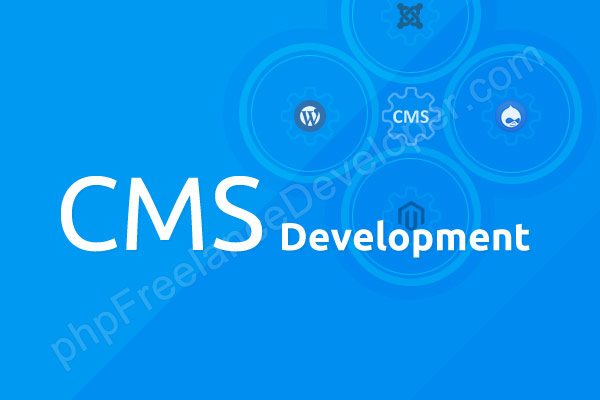How Content Management Systems have changed the face of the Internet
Discover how Content Management Systems (CMS) have transformed the way we create and manage digital content, empowering individuals and businesses alike
The Internet would not be what it is today without content management systems. At its beginnings, the technology supporting it was difficult to use for simple people. There was a time when technology was not dedicated to the masses and when navigating on the Internet from your phone was not necessarily sci-fi, but at least a daunting task. A few years had to pass until the technology became mainstream and affordable and until using gadgets became very intuitive and easy. Nowadays, almost nobody reads the instructions when buying a new smartphone or a tablet. The operating mode is almost identical in most mobile devices, otherwise people wouldn’t buy them. Gone are the days when technology was dedicated exclusively to experts and scientists.
Content Management Systems (CMS) have fundamentally transformed the way we interact with the internet. By democratizing website creation and management, CMS has empowered individuals and businesses alike to share information, connect with audiences, and drive digital transformation.
 |
Easy-to-use software
But what does the explanation in the first paragraph has to do with CMS? What we want to emphasize is that this trend also applies to software. Just as you don’t have to be a rocket scientist to use a gadget, the same way, you don’t need to be an expert to build a website. Web development has become much more accessible since the emergence of CMS, which invite ordinary, non-tech users to create their own websites.
The evolution of CMS
1. Late 1990s, early 2000s – Web programming languages and frameworks
Before this revolution, building a website happened about like this: you edited manually some HTML codes with the help of a text editor and then uploaded the information to a server as static web pages. You could modify the contents by modifying the static files and uploading them again. Pretty annoying, right? As a response to this, software able to generate dynamic HTML pages was developed, like PHP and Zend. PHP programming really made a difference, but still, building a website would cost you lots of money.
2. Early 2000s
This was the era of emerging CMS software, like Joomla, Drupal, or Mambo. Now you could create a website in no time by using their templates. Customization was rather difficult those days and the templates were not really a joy to the eye.
The situation changed in 2003, when WordPress was launched, and it offered plenty of customization options. Still, being an ignorant meant you absolutely did not have a chance to design a website on your own. You still needed the help of an engineer.
3. The 2010s – the new generations of CMS
New tools, like WIX or Squarespace were developed and people without coding knowledge could use them. WordPress has evolved, too, as it does not focus only on blogs, but also on creating websites and providing users with the most imaginative plugins. Most of the CMS nowadays are open source, which reduces expenses a lot. This revolution has had dramatic consequences on e-commerce, as well.
Here's how CMS has reshaped the internet:
1. Democratization of Web Development:
- No-code/Low-code: CMS platforms have made it possible for people with little to no coding knowledge to create and manage websites. This has led to a surge in personal blogs, small business websites, and online communities.
- Rapid Prototyping: CMS enables quick iteration and experimentation, allowing for rapid development and deployment of websites.
2. Enhanced User Experience:
- Intuitive Interfaces: CMS platforms provide user-friendly interfaces that simplify content creation and management. This has led to more visually appealing and engaging websites.
- Seamless Content Updates: CMS allows for easy updates and modifications to website content, ensuring that information is always current and relevant.
3. Improved Search Engine Optimization (SEO):
- SEO-Friendly Features: Many CMS platforms come with built-in SEO tools that help optimize website content for search engines.
- Faster Page Load Times: CMS can help optimize website performance, which is a critical factor in SEO.
4. Enhanced Security:
- Regular Updates: CMS providers regularly release security patches to protect websites from vulnerabilities.
- Robust Security Features: Many CMS platforms offer advanced security features, such as firewalls, intrusion detection systems, and secure user authentication.
5. Global Reach and Multilingual Support:
- Internationalization: CMS enables businesses to create multilingual websites and target specific geographic regions.
- Global Content Delivery Networks (CDNs): CMS can integrate with CDNs to improve website performance and reduce load times for users around the world.
Popular CMS Platforms:
- WordPress: The most widely used CMS, offering a vast ecosystem of themes and plugins.
- Drupal: A powerful and flexible CMS, often used for complex websites and web applications.
- Joomla: A user-friendly CMS with a strong community and a wide range of extensions.
- Shopify: A popular e-commerce platform that simplifies online store creation and management
Master Custom CMS: A Lucrative Path for PHP Freelancers
Conclusion
You could have never imagined your grandmother using a tablet 10 years ago, isn’t it? And neither did you see yourself designing your own professional website. Software developers have a lot to learn from this. If you are planning to be on the market for many years, you need to be a visionary. Just consider how much things have changed within the last two decades. If you still want to be on the market in 10 years time (which is enormous in terms of software business), at least one thing will continue to apply: people need easy-to-use, intuitive software. What remains is to see what other innovations will appear